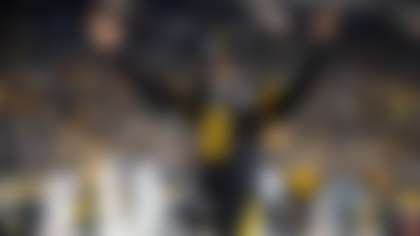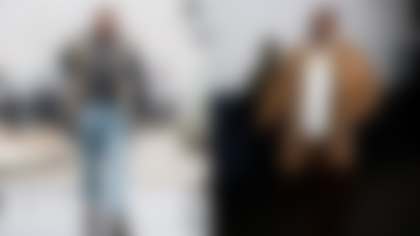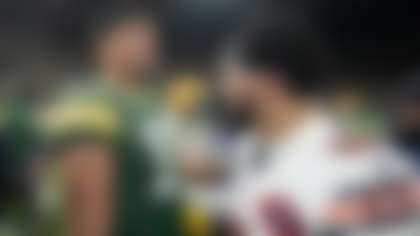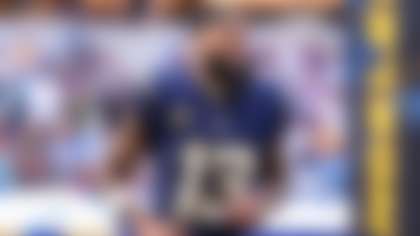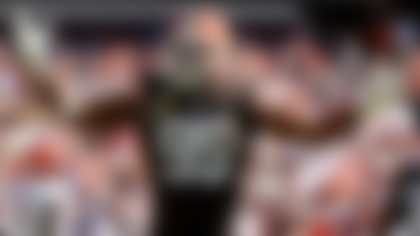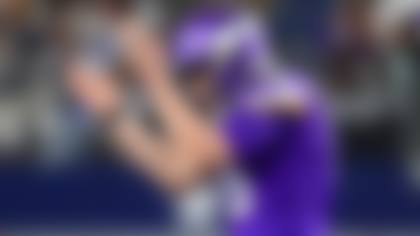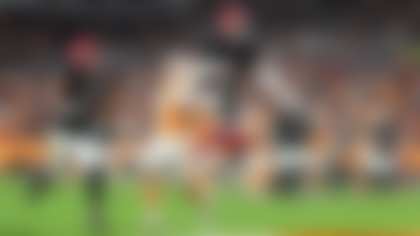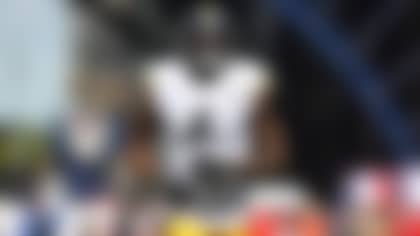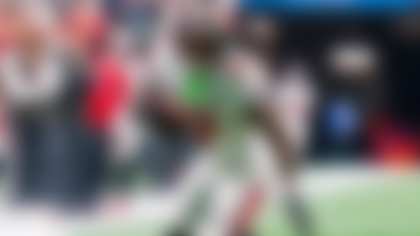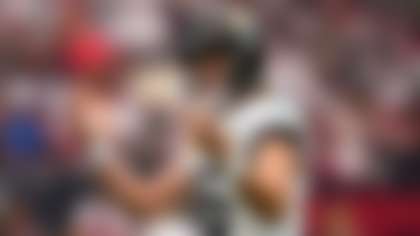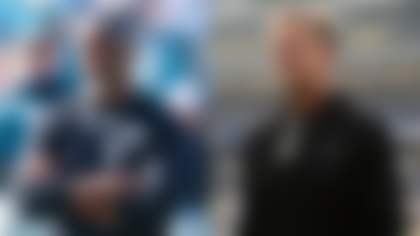With the Chicago Bears, it has always been about defense. From George Halas' heyday to the reincarnation of the "Monsters of the Midway" under Mike Ditka, this organization has always leaned on its defense to spearhead championship pursuits.
This tradition continued under Lovie Smith, the former head coach and defensive coordinator who guided the franchise to Super Bowl XLI on the strength of a ferocious D that pummeled opponents with physicality and toughness. Although the Bears failed to secure the franchise's second Lombardi Trophy during Smith's tenure, Chicago remained in contention on the strength of its defense alone.
However, a desire to take the franchise to another level prompted Phil Emery to think outside the box. To replace Smith, the Bears general manager settled on Marc Trestman, an innovative offensive mastermind who can revive a dormant unit that lacked the punch to compete with the high-octane attacks ruling today's NFL.
While change is always met with a degree of skepticism, I believe the move to an offensively oriented head coach could produce fireworks in the Windy City, allowing Chicago to compete for a title soon. Here are four reasons why:
1) Marc Trestman's innovative approach will test defensive coordinators.
The fascination with Chip Kelly's offense in Philadelphia has dominated offseason headlines, but Trestman's wizardry in Chicago could make for the bigger story by season's end. The highly experienced coach has been behind some of the most prolific offenses in recent memory -- this cannot be ignored.
As the offensive coordinator/quarterbacks coach of the San Francisco 49ers in 1995, Trestman directed an attack that led the NFL in scoring and passing yards while ranking second in total offense. Jerry Rice set an NFL record with 1,848 receiving yards -- a mark that lasted until Calvin Johnson topped it last season -- while logging 122 receptions and 15 touchdown catches. Trestman orchestrated another high-powered unit as offensive coordinator for the 2002 Oakland Raiders, who led the league in total offense and passing yards per game on their way to making an appearance in Super Bowl XXXVII.
Those feats certainly validate Trestman's strengths as a savvy play caller, but it is his work as a head coach in the Canadian Football League that should have observers intrigued by the Bears' offensive potential. In guiding the Montreal Alouettes to three Grey Cup appearances and two titles in five seasons at the helm, Trestman melded his traditional West Coast offense with a fast-paced approach that featured multiple formations, constant motion and a variety of personnel groupings.
I spoke to a former CFL defender who is familiar with Trestman, and he described the 57-year-old as a "mad scientist" with a creative mind and an aggressive disposition. He raved about Trestman's willingness to push the envelope with tempo and pacing, and he suggested that opponents should expect to see a complex, quick-rhythm passing attack complemented by a diverse screen package as the basis of the game plan. He also anticipated Trestman using a variety of unbalanced formations and odd personnel packages designed to keep defenders guessing on a down-by-down basis.
When I asked the former CFL defender to compare Trestman's offensive structure to a current NFL system, he pointed to the multifaceted schemes of the New Orleans Saints and San Francisco 49ers. Each of those offenses features multiple personnel packages and formations to create advantages at the line of scrimmage.
2) Jay Cutler finally gets a quarterback-friendly system in Chicago.
In today's NFL, teams must structure their offenses around the strengths of the quarterback. The top offensive coordinators design game plans with the intention of putting the signal-caller in the best situation to succeed.
Cutler wasn't given the opportunity to maximize his talents under previous play callers in Chicago (Ron Turner, Mike Martz and Mike Tice). He was asked to play in high-risk/high-reward systems that placed a premium on vertical throws but failed to protect him or provide sufficient options to counter the blitz-heavy tactics of opponents. Additionally, Cutler wasn't provided with enough chances to make the kinds of confidence-boosting, high-percentage throws that foster the rhythm necessary to consistently pick apart defenses. As a result, during his tenure with the Bears, Cutler has completed just 59.6 percent of his passes and compiled an underwhelming 82:63 touchdown-to-interception ratio. Factor in the 148 sacks and countless hits taken by Cutler, and it's easy to see why he hasn't played up to his potential in Chicago.
I would expect that to change under Trestman, based on the coach's distinguished reputation as a quarterback guru. He helped Steve Young earn Pro Bowl recognition in 1996, and Rich Gannon netted the 2002 NFL MVP under his guidance. Most recently, Trestman transformed a wily veteran, Anthony Calvillo, into a CFL superstar. With each of those quarterbacks, Trestman implemented a quick-rhythm passing game that featured a number of high-percentage throws designed to get the ball into the hands of top playmakers on the perimeter. Most importantly, he crafted systems that kept those quarterbacks from taking a pounding in the pocket, leading to better play and more production from the passing game.
I expect to see Cutler operating an aerial attack built exclusively on three- and five-step drops, with short and intermediate routes on the perimeter. He will throw a number of slants and stick routes to take advantage of the size of his top receivers (Brandon Marshall is listed at 6-foot-4, 230 pounds, Alshon Jeffery checks in at 6-3, 216 and Martellus Bennett stands an imposing 6-6, 255). Additionally, Cutler will be asked to throw more crossing routes designed to get the ball to his playmakers on the move while also giving him an effective counter to the blitzes opponents favor against the Bears. These routes, which are staples of the West Coast offense, are also ideally suited for a strong-armed thrower with a quick release like Cutler. Just look at how well it worked in the video clip above.
The Bears will continue to take shots down the field, but they'll do so selectively, specifically dialing them up against favorable matchups on the outside or against blitz pressure. Cutler is a superb fade thrower, and his receivers excel at winning 50-50 balls, using their size and physicality to ward off defenders. These traits should encourage Cutler to take more shots in a system designed to create (and exploit) one-on-one matchups. Check out the video clip to the right -- there's more of that to come.
The 2013 season is a contract year for Cutler, and Trestman will put him in the best possible position to earn big bucks.
3) Matt Forte is a potential 1,000/100 back in Trestman's offense.
Forte is arguably the most complete back in the NFL, but he has been underutilized for most of his career in Chicago. Rarely has he received 20-plus carries in a game, and the team seemingly scaled back his involvement in the passing game in recent years, to boot. While team officials suggested the plan was to preserve him for big games down the stretch, it certainly didn't make sense to see such a gifted back playing a minimal role at times.
Expect Forte to become a major contributor in Trestman's offense. The sixth-year pro will be utilized as a dual-threat weapon out of the backfield. As one of the top pass-catching running backs in the NFL, Forte will become an integral part of the game plan, a do-it-all playmaker on the perimeter. He will align in various spots in open formations to create mismatches on the outside. Given his superb route-running skills and strong hands, Forte could become a nightmare to defend, especially with opponents placing an emphasis on slowing down Marshall in the passing game.
Additionally, Forte's ability to do damage on screen passes -- which are a big part of Trestman's playbook -- could take the Bears' offense to another level. Getting Forte free on the perimeter with a few lead blockers could result in big plays, as evidenced in the video to the right. Trestman used Charlie Garner in a similar capacity with Oakland in 2002, and the veteran running back totaled 1,903 yards from scrimmage (962 rushing yards; 91 receptions for 941 receiving yards).
Given Forte's unique skills as a runner/receiver, it is very possible the Bears star could become just the second running back in NFL history to rush for 1,000 yards and catch 100 balls (LaDainian Tomlinson did it 2003).
4) This receiving corps is more dangerous than the 2012 group.
The one-dimensional nature of the Bears' passing game elevated Marshall to elite status, but it made the unit easy to defend in big games. This season, however, the emergence of Jeffery and Earl Bennett as key contributors, plus the addition of Martellus Bennett at tight end, will make Chicago's passing game tougher to stop. Let's take a closer look at each of those guys:
Alshon Jeffery: In Jeffery, the Bears have an imposing pass catcher with the size and strength to overwhelm defenders on the perimeter. He showed flashes of that ability in an injury-riddled rookie campaign, catching 24 passes for 367 yards and three scores in 10 games (six starts). Although he primarily received his touches on vertical routes (fades and posts), Jeffery has shown promise in other areas of the route tree. With a full offseason to master the nuances of the position, he could be a legitimate threat on the outside.
Earl Bennett: Bennett is the ideal WR3 in a West Coast offense. He is big enough to handle the physicality on the outside and quick enough to win on option routes between the hashes. Also, he's a good runner after the catch, which makes him an effective playmaker on quick screens. (Check out the video to the right.) This is particularly important in a new system that places a premium on getting the ball out of Cutler's hands quickly.
Martellus Bennett: The acquisition of Bennett gives Cutler a big body to target between the hashes. The sixth-year pro enjoyed a breakout season in 2012 with the New York Giants, piling up 55 receptions for 626 yards and five touchdowns. Most importantly, he finally played up to his potential by using his athleticism and receiving skills to control the middle of the field. With opponents employing various forms of Cover 2 to neutralize Marshall on the outside, the Bears can exploit the middle with Bennett running down the seams. Additionally, he gives Cutler another big target to find when the field condenses in the red zone. If Bennett can pick up where he left off in 2012, he can add a whole new dimension to this offense.
Follow Bucky Brooks on Twitter @BuckyBrooks.


